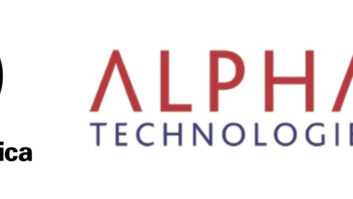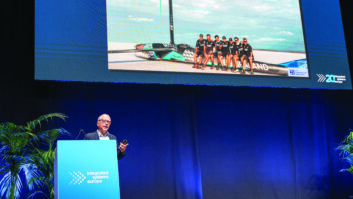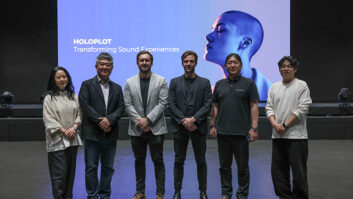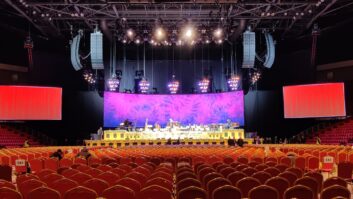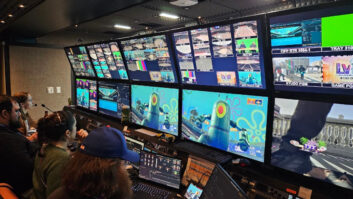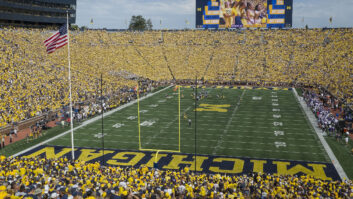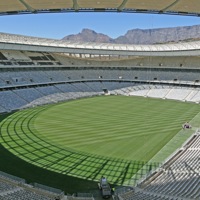
Installation Europe recently got to tour not one, but three of the stadiums that will see action during this summer’s FIFA World Cup. Paddy Baker reports from the terraces
Click here to see more pictures from our South African stadium tour
When you hear that one company won the contract to install the audio systems in nine out of 10 of the FIFA World Cup 2010 stadiums, you assume that it must have approached some kind of central procurement body. In fact, in South Africa there’s a policy to devolve such decisions regionally as far as possible. This means that local knowledge can feed into the plans for the stadium, not only during the tournament but, perhaps more importantly, for the years afterwards, when the ground has to be a useful facility for that region. About the only downside is that to win these contracts, audio company Prosound had to make separate bids for each stadium.
“In every stadium there was a different principle,” explains Prosound technical director Mark Malherbe. “In some they appointed a separate AV consultant who had very clear ideas of what they wanted to achieve. In others it was the responsibility of the standard electrical contractor, and in others it was down to the builder.
“So we homed in on the optimal people on each project to target. If it was the builder, we went to them on a venture basis with a predesigned package and said, ‘Here’s the specification which we will let you print and use as your tender document, provided we’re given the opportunity to bid.’ We made sure it was generic – it was very much based on performance criteria.
“If we went to an electrical contractor, we tried to give them assistance in producing their documentation, or if they already had it, making sure their design was actually achievable.”
So how do you go about doing a basic design for the sound system in an as-yet-unbuilt stadium? Malherbe explains: “We had the normal basic performance criteria – speech intelligibility, frequency response, average SPL” – which enabled a preliminary design to be drawn up. “Once we got closer to the stadiums being built, there was so much material available because everyone was showing off what their city was going to have. We were able to get a sneak preview of what the venues were going to look like” – so the company could present proposals that fitted into the stadium designs.
You may have surmised that Prosound has some experience in the world of stadium audio, and you’d be right. Founded in 1973 initially to support the touring market, the company later broadened into fixed installation and in 1981 put in the audio system at Ellis Park rugby stadium. The American consultants on the project specified Electro-Voice loudspeakers, for which Prosound was (and still is) a local distributor. That install came to set the template for dozens more stadium installs by the company. “That Electro-Voice system sat there until 1995, still performing – and out-performing a lot of the more modern systems that came in,” recalls Malherbe. “We’ve used E-V in all our subsequent stadiums – we’d done in excess of 30 before the nine now for the World Cup – and it’s always done what we wanted it to do.”
In February, IE visited three contrasting World Cup stadiums: Soccer City, in the Soweto area of Johannesburg, which will hold the opening ceremony and the World Cup final; the Loftus Versfeld football and rugby stadium in Pretoria, which has had a new sound system for the World Cup; and Cape Town Stadium, a new-build venue also known as Green Point, from the name of the nearby stadium that it is replacing.
All of these feature E-V loudspeakers and Crest power amplifiers, controlled by Peavey MediaMatrix Nion units.@page_break@
Soccer City
Soccer City has a significance that goes beyond sport, explains Malherbe: “This is the stadium where in 1990, when Nelson Mandela was released from prison, he gave his homecoming speech to the nation. For us it was something quite special, as we were appointed as the audio contractor for that event.”
The venue previously had bowl seating, with one raised grandstand on the western side. For the World Cup, the bowl has been dug deeper and seating has been extended all the way around – bringing the capacity to 94,700.
The new audio PA system uses 20 clusters of E-V speakers in the roof, distributed around the field. Most of the clusters consist of two of the dual 12in units (PX2122) firing down to the lower seating, another two of the same units firing to the middle range of the seating, and two 15in wider-dispersion units (PX2152) firing towards the back of the seating. In four of the clusters, there are an additional two 15in boxes firing towards the field. These are mainly intended for use in voice evacuation during commercial events, if there is a need to evacuate the field. There is a total of 10 amplifier positions on the fibre-optic network.
In the concourse areas, RCF PL60 speakers are used for voice announcements and PA. Malherbe explains that he would have preferred large-format horn speakers, but these were vetoed by the architect.
Loftus Versfeld
At the 51,760-capacity Loftus Versfeld stadium, Prosound was called in to carry out a temporary upgrade to the audio system before the World Cup money had come through. This featured Electro-Voice speakers on the ground.
“The first MediaMatrix Nion went in in 2007,” explains Grant Scott, head systems engineer of Prosound. “There was no CobraNet – everything was analogue from the Nions down to each of the rack positions. There were long speaker cable runs – we trenched the whole way around the field.
“For the temporary upgrade, we were able to get the loudspeakers close to the crowd because they were on the ground. We had to revisit this for the World Cup, as you’re not allowed anything on ground level,” explains Malherbe. As in any such installation, the first question to consider, he says, is: “What can we mount the loudspeakers on? Then it’s about choosing speakers that can perform under those conditions – the throw distance, what the coverage is expected to be, and weight is a huge criterion when you’re hanging from structures.” From this starting point, acoustic modelling with EASE software leads to the acoustic design.
Audio is distributed around the stadium via CobraNet on a fully redundant fibre-optic loop – all the amplifiers have NX5 CobraNet modules. New amplifier rooms have been created on the east and west sides of the ground, to add to existing ones behind the screens at the north and south ends.
Installing the new system in between matches at the stadium meant that at least one of the systems had to be kept operational for the next game. The work had be tackled piece by piece, says Scott: “Using the existing amplifiers, getting the fibre network running and systematically going round and doing it – it added a little to our pressures.” However, support of stadium management made things easier. “In some stadiums, just getting hold of keys is a mission,” he observes. “Knowing the man with the keys and making him your friend is very important!”
Because the Crest-Peavey package is not EN60849 compliant, Prosound came up with a system using a custom-manufactured box to drive relays to switch in changeover amplifiers.
“If an amplifier fails, you immediately get fault recognition at the PC upstairs and the system asks if you want to change over to the spare amplifier. We came up with this concept and it works very well,” explains Scott. “This only covers the voice evacuation side of the system. On the PA system, we use A/B wiring so we will never have no two adjacent speakers failing.” @page_break@
Cape Town
Cape Town Stadium enjoys the best location of the three stadiums in our tour – with striking views of Table Mountain on one side, and the coast on the other. It has a capacity of 68,000 for the World Cup, but 30,000 of this will be removed afterwards. The original stadium nearby will be redeveloped as a 20,000-seater athletics stadium. “One of the things we’re trying not to do is to put an athletics track around [a football] pitch as it takes your fans away from the action of the game,” explains Marthinus Bester, IT manager at the stadium, who is also in charge of AV.
This project was one of only two of Prosound’s World Cup projects where the company did not design the PA system. At Cape Town, this was carried out by Berlin-based ADA (Acoustic Design Ahnert – Dr Ahnert being the inventor of EASE software).
“I think the brief for ADA was less about ensuring that the stadium was well covered and more about preventing noise pollution outside,” says Malherbe. “Green Point is notorious – every time there was an event in the old stadium, the management were inundated with complaints. So the brief here was to contain the noise in the stadium.”
For this reason, this is the only stadium of the nine that uses line arrays – 14 clusters of Electro-Voice XLD boxes. The make-up of each cluster is different, depending on the area it is covering. There are four amplifier locations – north, south, east and west – fitted with Crest CKI power amplifiers with NX cards. The system is driven from two Nions in the main control room, and distribution is via CobraNet over fibre.
“In this stadium we were only responsible for PA in the bowl, not for anything to do with evac,” adds Malherbe. “We get a feed from the evacuation system which overrides the main bowl PA and takes control of it for evacuation messages.”
Malherbe admits to some frustration with the sound design in this stadium, which was specified several thousands of miles away: for instance in some areas, such as the concourse, crossover between the PA and VA systems is not well covered. At the time of writing, Prosound is looking to extend the PA system to address these shortcomings in time for the World Cup.
Taken as a whole, the World Cup installs are a fantastic feather in Prosound’s cap. The company is contracted to run the installations for a year, and is hoping that this will be extended. There have been many reports in the media about whether or not South Africa will be ready to host the World Cup in June, but from what we’ve seen on our visit, if FIFA has a checklist in the run-up to the tournament, ‘stadium audio’ should have a large tick next to it.
www.ada-acousticdesign.de
www.crestaudio.com
www.dynacord.com
www.electrovoice.com
mediamatrix.peavey.com
www.midasconsoles.com
www.prosound.co.za
www.rcf.it
